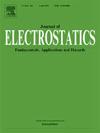A review of nanosecond pulsed surface dielectric barrier discharge actuators: Effect of electrical parameters and pressures (invited paper)
IF 2.1
4区 工程技术
Q3 ENGINEERING, ELECTRICAL & ELECTRONIC
引用次数: 0
Abstract
Nanosecond-pulse Surface Dielectric Barrier Discharge (ns-SDBD) plasma actuators are promising tools for active flow control (AFC) in high-speed, high-Reynolds-number flows via rapid gas heating and shock wave generation in the discharge, distinct from other momentum injection-based AFC methods. This paper reviews recent advancements in ns-SDBD actuators, focusing on their electrical characteristics, pressure-dependent performance, and mechanisms. Firstly, electrical characterization reveals consistent discharge mechanisms, marked by dual-peak current waveforms, with performance influenced by pulse parameters and material properties. Secondly, as pressure increases, ns-SDBD actuators exhibit significant rises in breakdown voltage accompanied by transitions from diffuse-like to filamentary discharge modes. Finally, theoretical frameworks link discharge characteristics to surface charge accumulation and fast gas heating to nitrogen-oxygen quenching. Future challenges include performance and mechanisms of mode transitions under high repetition frequencies and high pressures, detailed physical models supported by advanced diagnostics, and interdisciplinary collaboration to enhance ns-SDBD applications in aerospace and energy systems.
纳秒脉冲表面介质阻挡放电致动器的研究进展:电参数和压力的影响(特邀论文)
纳秒脉冲表面介质阻挡放电(ns-SDBD)等离子体致动器与其他基于动量注入的AFC方法不同,它通过快速气体加热和放电中产生的冲击波,在高速、高雷诺数流动中实现主动流动控制(AFC),是一种很有前途的工具。本文综述了ns-SDBD致动器的最新进展,重点介绍了它们的电气特性、压力依赖性能和机理。首先,电学表征揭示了一致的放电机制,以双峰电流波形为特征,其性能受脉冲参数和材料特性的影响。其次,随着压力的增加,ns-SDBD致动器的击穿电压显著升高,并伴有从扩散放电模式向丝状放电模式的转变。最后,理论框架将放电特性与表面电荷积累联系起来,将快速气体加热与氮氧淬火联系起来。未来的挑战包括高重复频率和高压下模式转换的性能和机制,先进诊断支持的详细物理模型,以及跨学科合作,以增强ns-SDBD在航空航天和能源系统中的应用。
本文章由计算机程序翻译,如有差异,请以英文原文为准。
求助全文
约1分钟内获得全文
求助全文
来源期刊

Journal of Electrostatics
工程技术-工程:电子与电气
CiteScore
4.00
自引率
11.10%
发文量
81
审稿时长
49 days
期刊介绍:
The Journal of Electrostatics is the leading forum for publishing research findings that advance knowledge in the field of electrostatics. We invite submissions in the following areas:
Electrostatic charge separation processes.
Electrostatic manipulation of particles, droplets, and biological cells.
Electrostatically driven or controlled fluid flow.
Electrostatics in the gas phase.
 求助内容:
求助内容: 应助结果提醒方式:
应助结果提醒方式:


